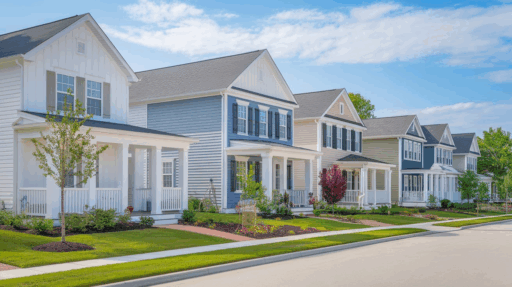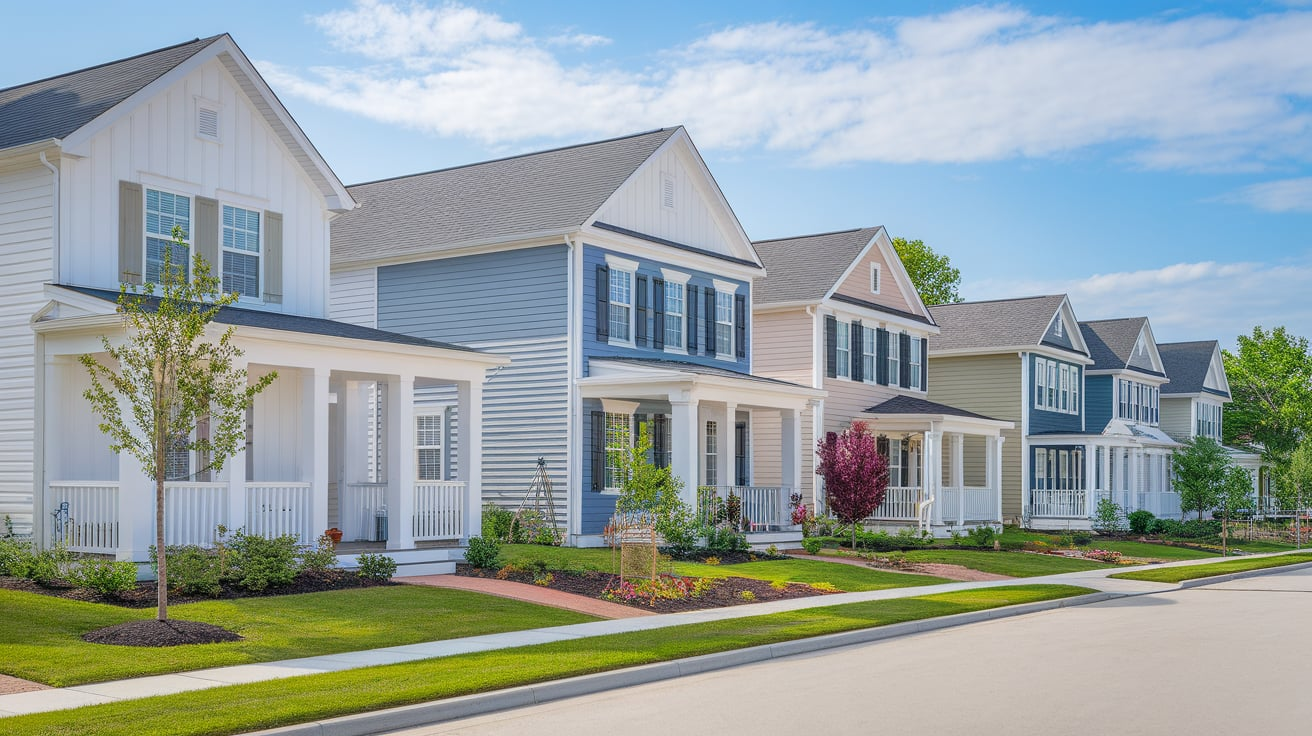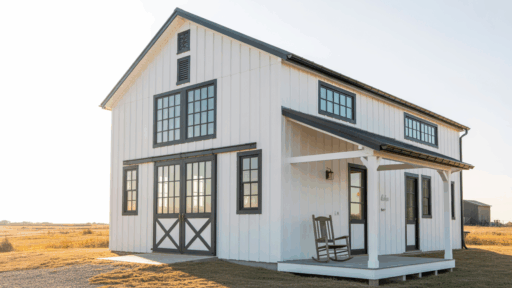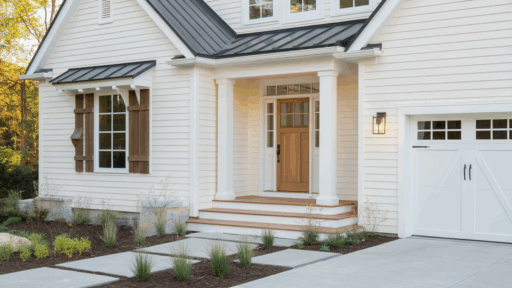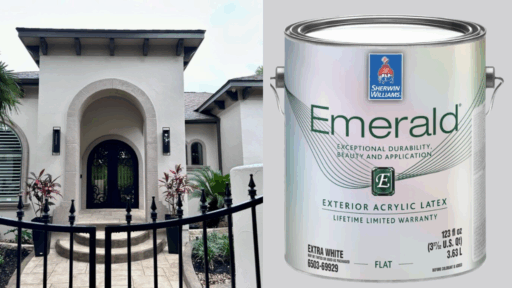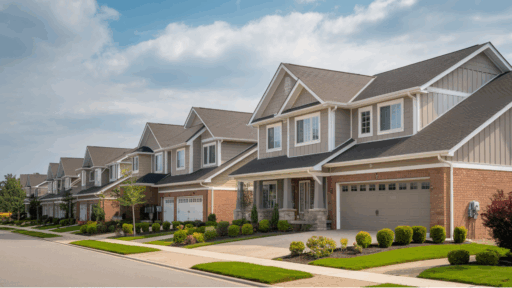Choosing the right paint color for your vinyl siding can make a big difference in how your home looks and feels.
The color you pick helps show off your style, adds curb appeal, and can even make your house stand out in the neighborhood.
Vinyl siding comes in many shades, but knowing which ones work best for your home can be tricky. That’s why I’ve put together this list of vinyl siding paint colors to help you get started.
From classic white to bold navy blue, each color offers something of its own. Whether your house is big or small, old or new, there’s a color here that can fit your style.
In this post, you’ll also find simple tips for choosing the right shade and ideas for making your exterior look its best. Let’s look at the colors that can change the look of your home.
Understanding Vinyl Siding Paint Colors
Choosing the right paint color for vinyl siding can make a big difference in your home’s curb appeal.
Vinyl siding is a durable and low-maintenance option, but not all colors work the same way on it. Light to medium shades are usually safest, as darker colors can absorb more heat and cause the siding to warp.
Many paint brands now offer vinyl-safe formulas in a wide range of colors, so you’re not limited to just beige or white. Look for labels that say “vinyl-safe” or check with your paint supplier before choosing.
Soft grays, warm taupes, blues, and greens are popular because they look modern and hold up well. When picking a color, also think about your roof, trim, and landscaping for a complete look.
A fresh coat of vinyl-safe paint is an easy way to update your exterior without replacing your siding.
Top Vinyl Siding Paint Colors
Vinyl siding color plays a big role in how your home looks from the street. Whether you want something soft and classic or bold and updated, there’s a color here to match your style.
1. Classic White
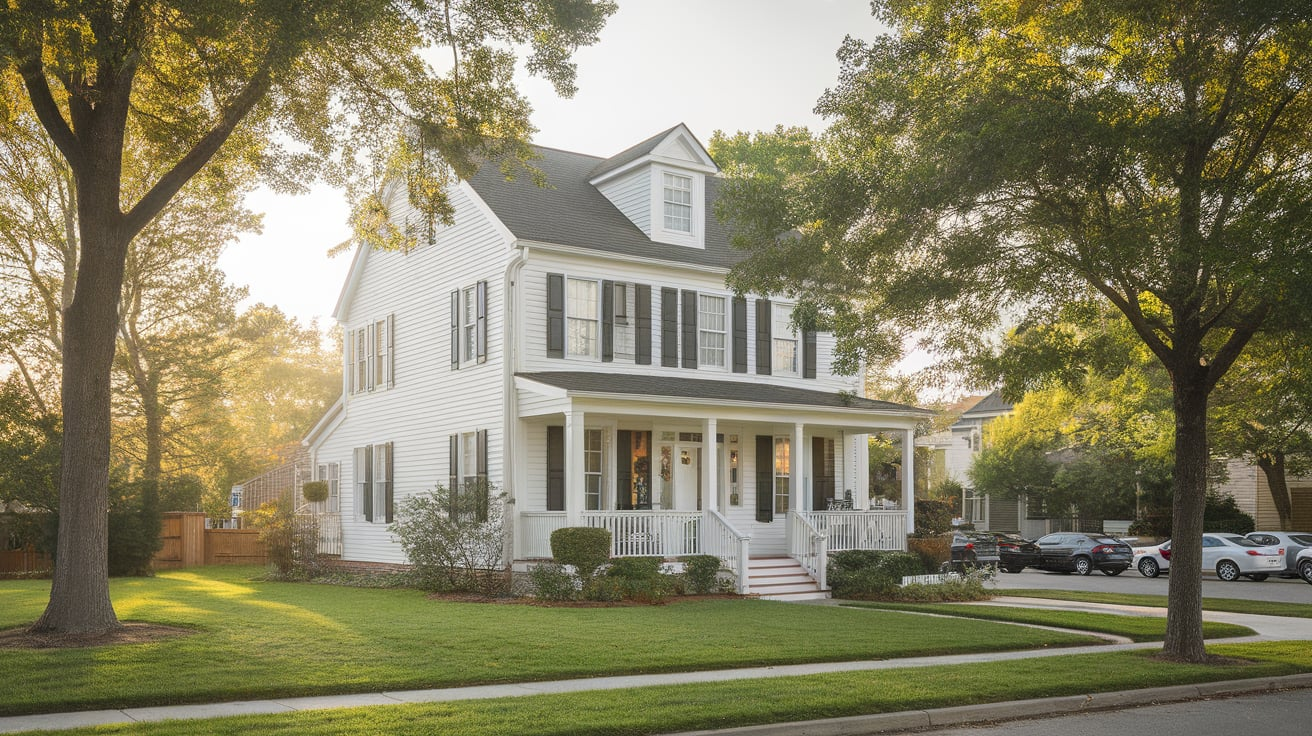
Classic white is always a safe and smart choice. It works with almost any home style, whether farmhouse, colonial, or modern.
White looks clean, fresh, and never out of date. It also reflects sunlight, which helps keep your home cooler in hot weather.
You can dress it up with black shutters or soften it with tan or gray trim. Classic white is a simple color that will always stay in style.
2. Soft Gray
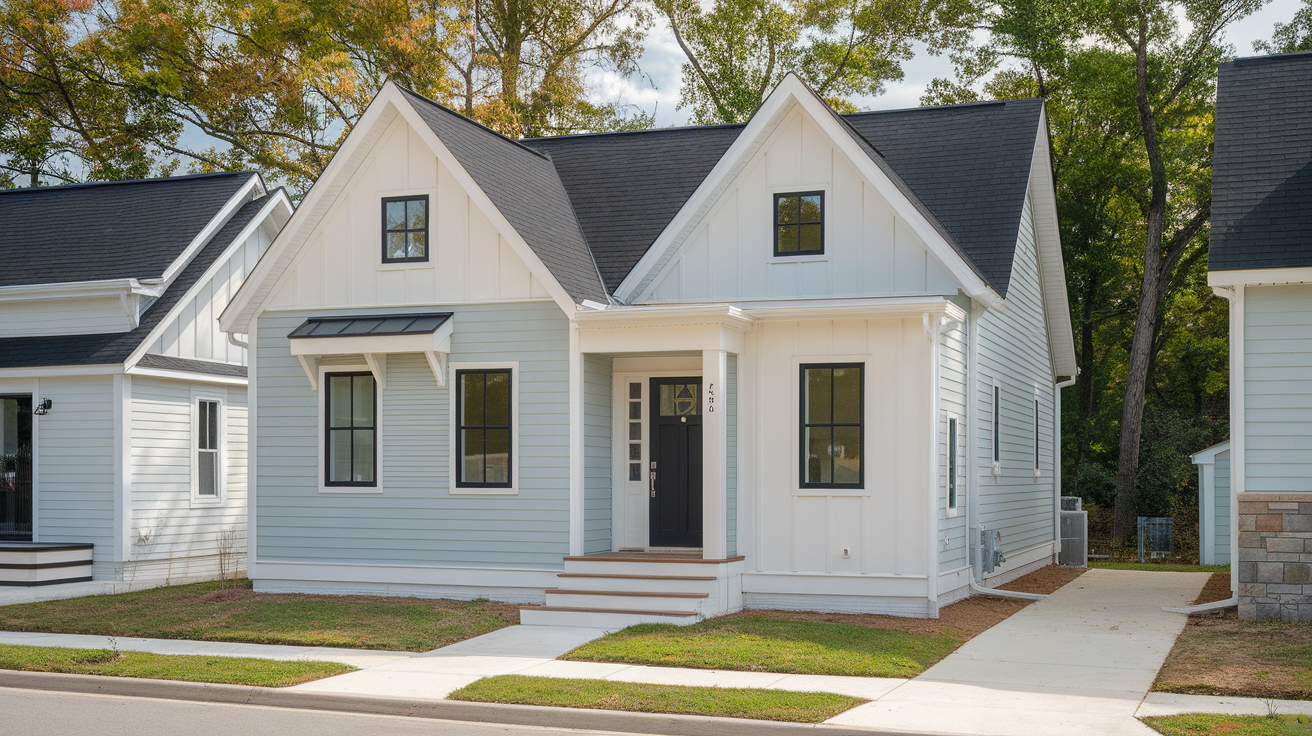
Soft gray is a popular pick for updated homes because it looks clean, calm, and current. It’s a neutral shade that blends easily with many accent colors, like navy blue, red, or black.
One great thing about soft gray is that it hides dust and dirt better than lighter colors, making it easier to keep up. It also works well with white trim or wood details.
No matter if your home is large or small, soft gray can give it a neat look.
3. Coastal Blue

Coastal blue gives your home a calm, beach-like look that feels easy and open. It’s a soft, medium blue that goes perfectly with white trim, light gray roofs, and natural wood touches like shutters or doors.
This color looks especially nice on cottage-style or coastal homes, but it can work well just about anywhere.
Coastal blue is a great choice if you want something a little more colorful without being too bright.
4. Sage Green
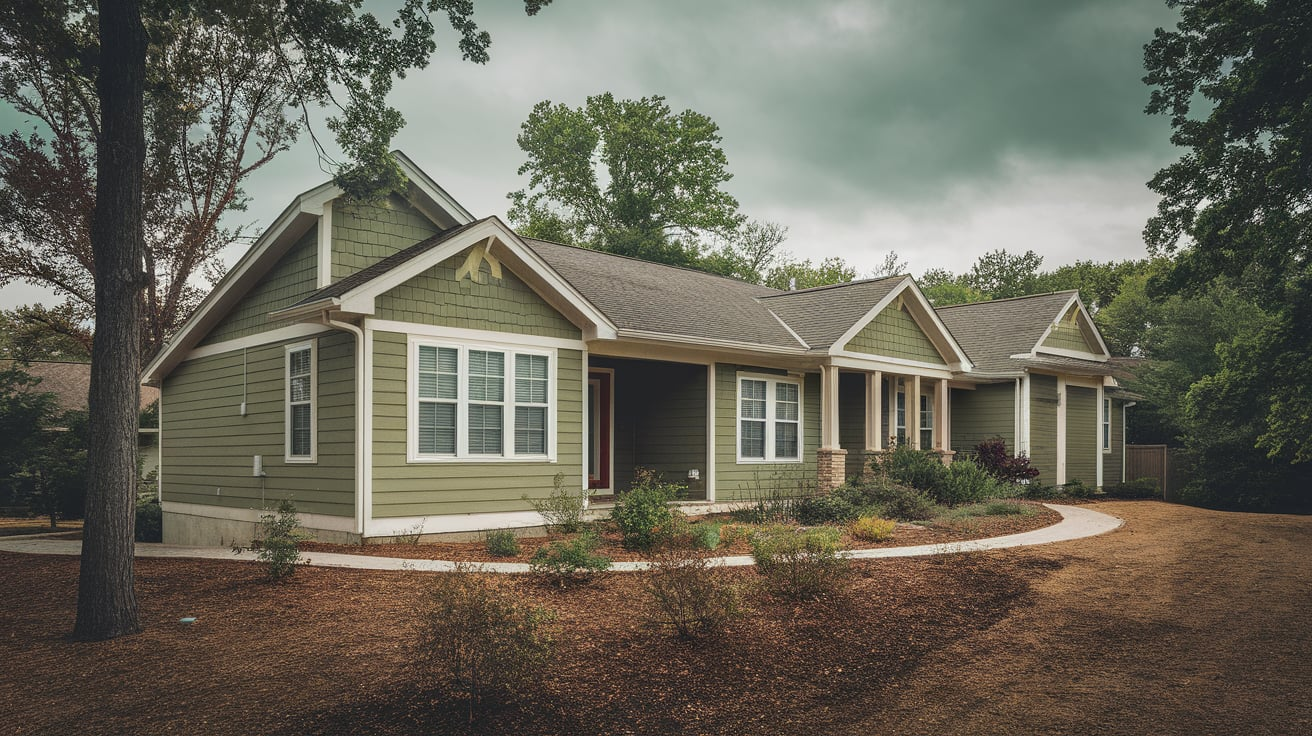
Sage green is a soft, nature-inspired color that blends well with trees, plants, and landscaping. Its calm, earthy feel makes it perfect for homes in more rural or wooded areas.
Sage green works well with stone paths, wooden doors, or cream trim.
Sage green is a great siding color to try if you like a natural look and want your home to feel peaceful and steady.
5. Charcoal Gray

Charcoal gray is a bold, updated color that gives your home a strong and neat appearance. It adds depth and makes lighter trims, like white or beige, stand out.
This shade is perfect for newer homes or anyone looking for a clean, refreshed look. Charcoal gray can also work in cooler areas since it doesn’t show dirt easily.
If you like a more serious color without going too dark, charcoal gray is a solid pick.
6. Beige
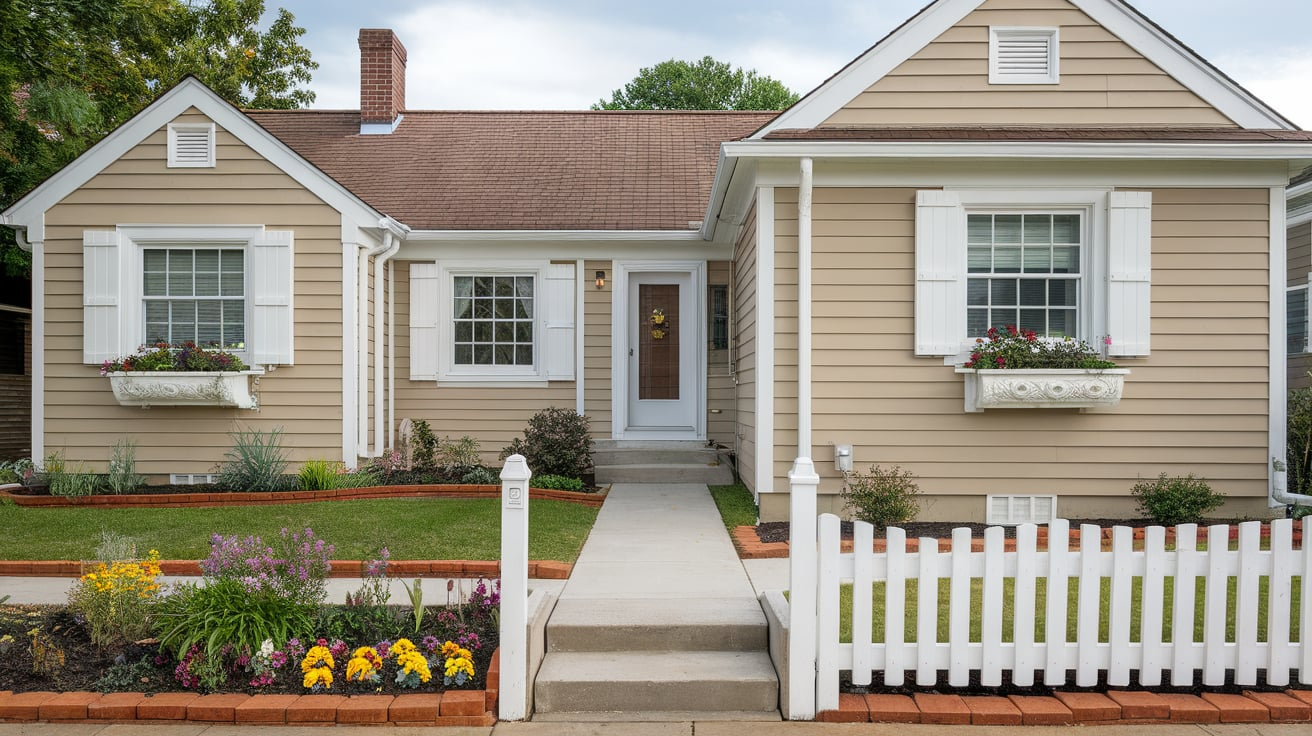
Beige is a warm, soft color that works well on traditional homes. It’s easy to match with other tones like brown, white, or even forest green.
Beige gives off a friendly and inviting feeling without being too bright. It’s also a simple option that doesn’t show dirt or fading as fast as pure white.
If you want a neutral color that’s safe and easy, beige is always a good choice for your vinyl siding.
7. Navy Blue
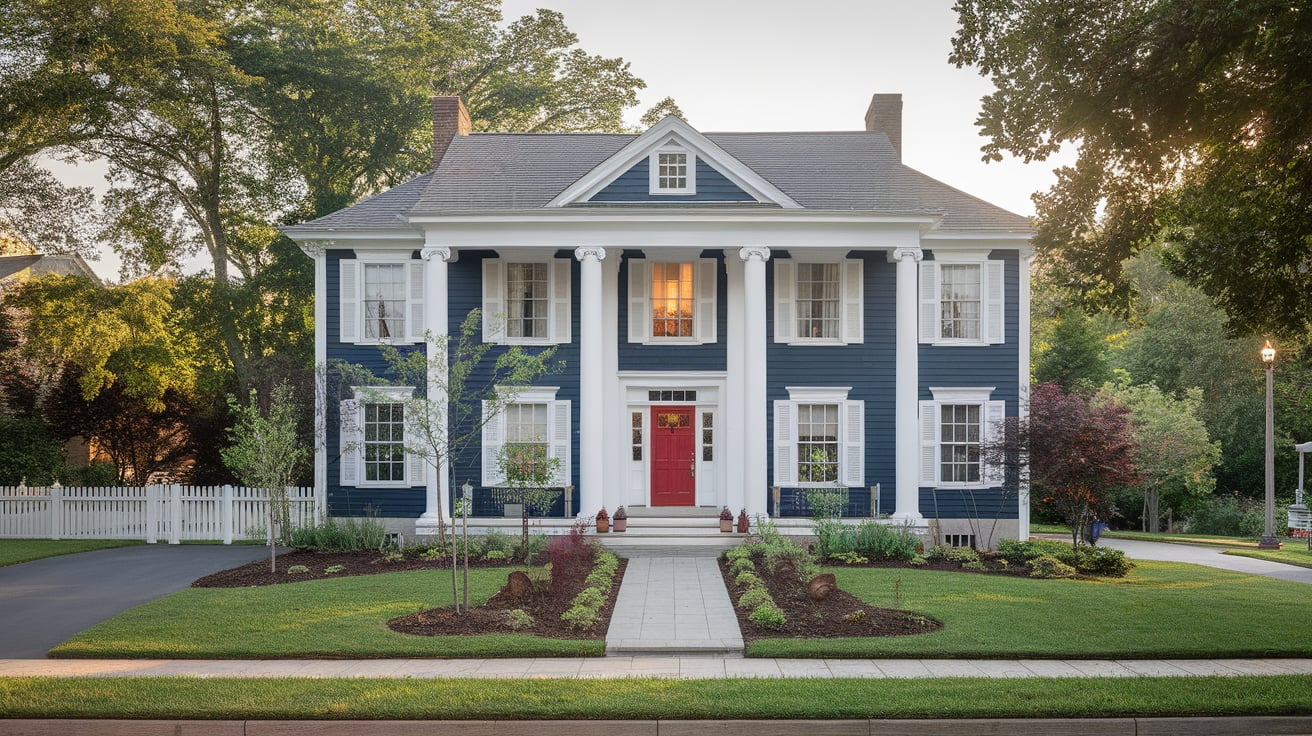
Navy blue is a deep color that brings a classic and nice look to your home. It works great with white trim or brick accents and can give both newer and older homes a strong, clean look.
Navy blue doesn’t fade quickly and adds a lasting style to the outside of your house.
If you’re looking for something bold but not too loud, navy blue is a great siding color that always looks neat.
8. Forest Green
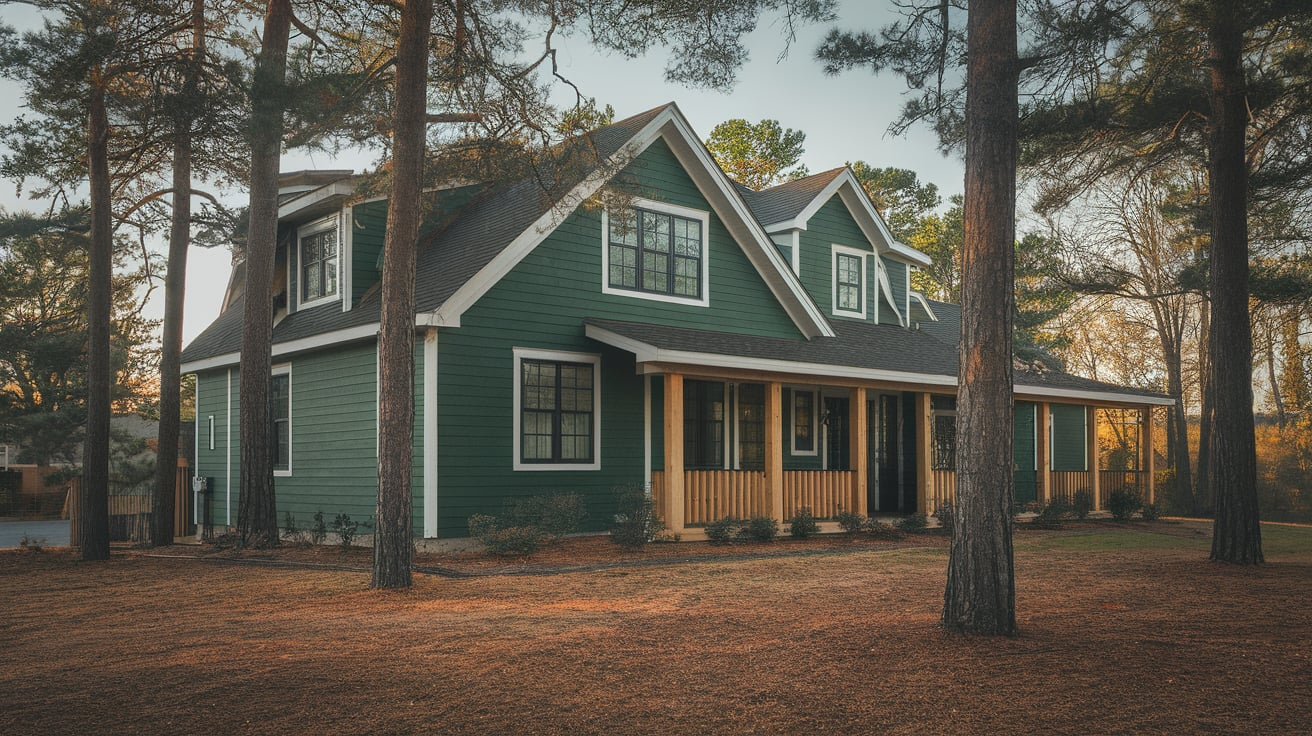
Forest green is a deep, earthy color that fits well in wooded or mountain areas. It blends naturally with trees and plants, making your home feel like part of the land.
This shade works well on cabins, ranch-style homes, or any house that wants a cozy, outdoor feel. Pair it with tan or wood trim to finish the look.
Forest green is a great way to bring the quiet beauty of nature to your home’s outside.
9. Light Blue
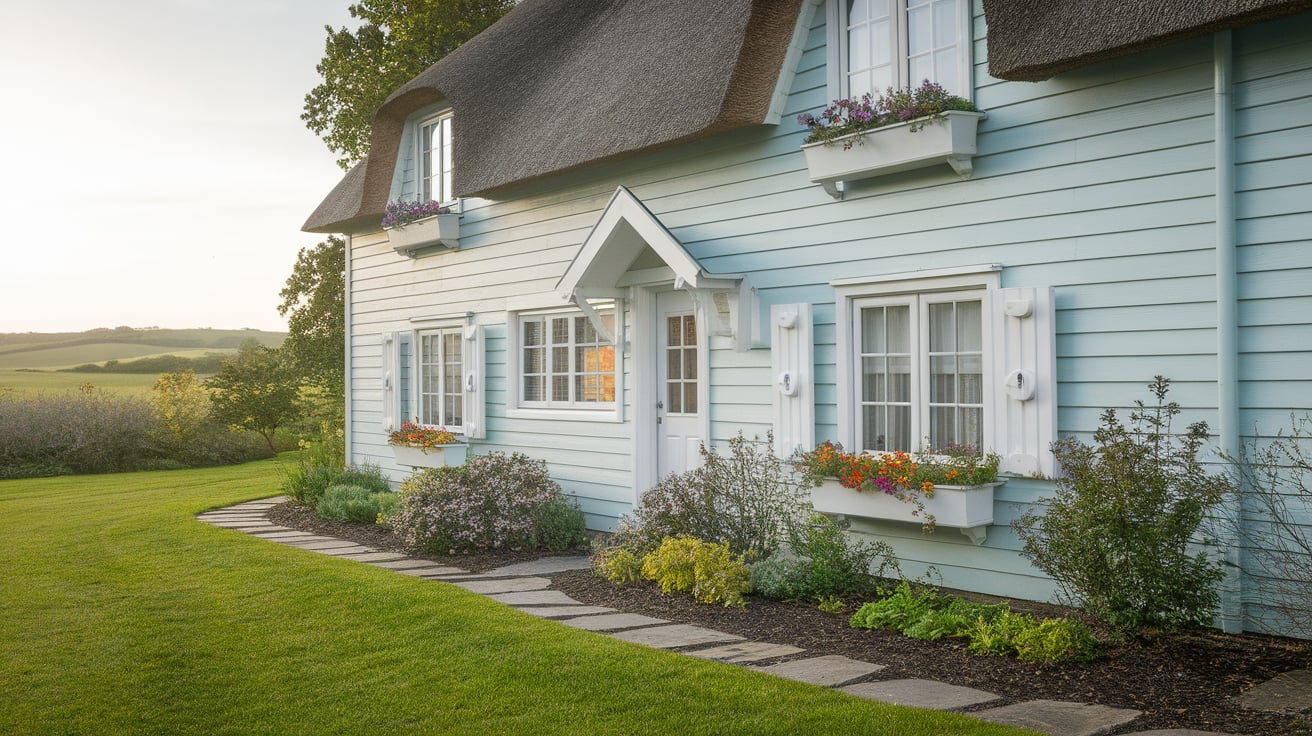
Light blue is soft and happy, making it a good choice for homes with a calm, easy feel.
It adds a little color without being too bold and looks especially nice on cottages, beach houses, or classic homes.
Pair it with white trim or shutters for a fresh, clean look. Light blue gives your home a calm look and is perfect if you want something different but still easy to enjoy.
10. Warm Taupe

Warm taupe is a mix between gray and brown, giving it a neutral tone with a little warmth. It’s a good choice for homeowners who want something a bit different than plain beige or gray.
Warm taupe works really well with stone, brick, or wood accents and fits with both modern and simple designs.
It’s a good pick if you want a balanced color that feels inviting without being too bright or too dark.
11. Red

Red siding makes a bold choice and gives your home a classic farmhouse or barn-style look. It’s bright, eye-catching, and full of personality.
Red works best with white trim, black shutters, or even a simple wooden door. This color is great if you want your home to stand out in the neighborhood and feel warm and full of life.
Red is full of energy, and it’s great for homes that want a little extra charm.
12. Yellow
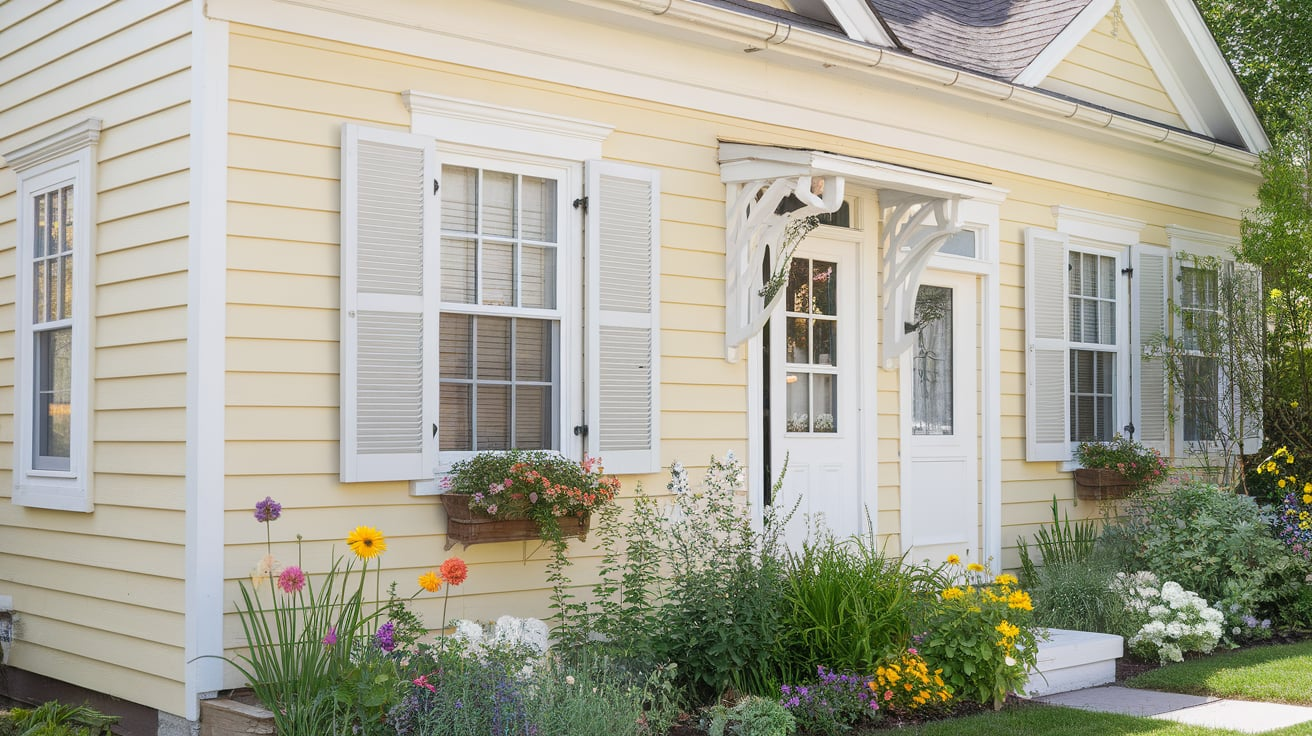
Yellow is bright and cheerful, and it brings a happy feel to any home. It looks especially nice on smaller houses, cottages, or homes with lots of windows and sunlight.
Yellow pairs well with white or soft gray trim to keep the look steady.
If you want your house to feel friendly and welcoming from the street, yellow siding is a fun and sunny option that brings a smile every time you pull into the driveway.
13. Black

Black vinyl siding is bold, updated, and full of style. It creates a clean and serious look, especially when paired with white or natural wood accents.
Black is great for homes with a fresh style or homeowners who want something different and eye-catching. It also hides dirt well and adds a bit of class.
While not for everyone, black siding makes a strong choice and works best on homes with sharp lines or a simple layout.
Tips for Selecting the Right Vinyl Siding Color
Picking the right color for your vinyl siding can feel overwhelming, but it doesn’t have to be. With a few smart tips, you can choose a shade that looks great and lasts for years.
- Consider your roof color: Your siding should complement, not clash with, the color of your roof.
- Check lighting throughout the day: Sunlight can change how a color looks, so test samples in morning and afternoon light.
- Think about your surroundings: Look at nearby homes, trees, and landscaping to find a color that fits naturally.
- Use vinyl-safe paint colors: Not all paint works on vinyl. Stick with light to medium shades labeled “vinyl-safe.”
- Match with trim and accents: Pick a color that pairs well with your window trim, shutters, and doors.
Choosing the right vinyl siding color adds instant charm and boosts your home’s overall value.
Enhancing Curb Appeal with Vinyl Siding Colors
Choosing a siding color is just one part of making your home look great.
| Curb Appeal Element | Tips for a Better Look |
|---|---|
| Trim and Accents | Match or contrast your siding with shutters, doors, and window trim. White trim pops on dark siding; dark shutters stand out on light homes. |
| Landscaping Features | Use plants, flowers, and garden elements to highlight your siding. Shrubs pair well with neutrals; bright flowers pop against grays and blues. |
| Siding Maintenance | Rinse off dirt with a hose or soft brush every few months. Avoid strong cleaners and check for fading or cracks. |
When your siding, trim, and landscaping all work together, your home will look well-cared-for and inviting, right from the street.
Conclusion
If you take care of your siding, the color will look nice for years. Simple care makes a big difference over time.
Picking the right vinyl siding color is a big step in making your home look its best.
The color you choose can show off your style, improve curb appeal, and help your house fit in or stand out in your neighborhood.
With so many good options, like soft gray, sage green, or bold red, there’s a shade for everyone.
I always recommend looking at your home’s shape, surroundings, and how the color looks in different lighting. Don’t forget to test a few samples before deciding.
Once your siding is painted, keeping it clean will help it stay fresh and bright for years.
No matter if you’re going for something lasting or current, the right color can truly change your home’s outside look. Use the tips and ideas in this post to choose a siding color you’ll enjoy coming home to every day.

